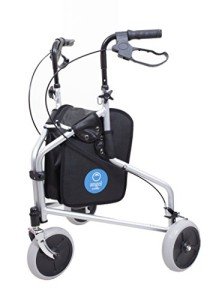The Seat Walker: A Comprehensive Guide to Mobility Aids
When it concerns maintaining independence and mobility, people with restricted mobility or specials needs frequently depend on various assistive devices. One such gadget that increasingly comes to the leading edge of mobility aids is the seat Folding Electric Walker Scooter for Smooth Mobility. This short article supplies an extensive appearance at seat walkers-- their features, benefits, types, and the elements to think about when choosing one.
What is a Seat Walker?
A seat walker is a flexible mobility aid developed mainly for people who might have problem walking unaided. It typically includes a frame with wheels, handles for support, and an integrated bench or seat, allowing users to take breaks when required. Unlike standard walkers or rollators, which just use support for walking, the addition of a seat makes the seat walker considerably more functional for lots of users.
Secret Features of Seat Walkers
- Wheels: Most seat walkers are equipped with front wheels that enhance mobility and ease of use, permitting users to slide efficiently over various surfaces.
- Seat or Bench: The most distinguishing function is the integrated seat, which uses a resting location for users when fatigue sets in.
- Manages: Adjustable deals with cater to various user heights, supplying appropriate assistance and making sure a comfy grip.
- Brakes: Safety brakes prevent the walker from rolling away when somebody is seated, boosting user security.
- Aidapt Lightweight Four-Wheeled Rollator Walker with Bag Frame: Many models are developed to be lightweight, making them easier to transport and navigate.
Benefits of Using a Seat Walker
Seat walkers have numerous benefits that make them an ideal option for numerous users.
- Improved Mobility: They supply higher stability and support than standard walkers, minimizing the danger of falls.
- Convenience: The ability to rest at any point makes them ideal for those who tire quickly or have actually restricted endurance.
- Independence: Seat walkers enable users to maintain a degree of self-reliance by allowing them to walk and rest without assistance.
- Flexibility: Suitable for both indoor and outdoor use, these walkers can adapt to different environments.
- Physical Activity: Regular use encourages physical activity and social interaction, which can improve general wellness.
Types of Seat Walkers
Different types of seat walkers deal with the varying needs of users. Here is a breakdown of the most common types:

| Type | Functions | Best For |
|---|---|---|
| Standard Seat Walker | Easy design, frequently with a lightweight frame and very little features. | Users requiring fundamental mobility assistance. |
| Heavy-Duty Seat Walker | Strengthened frame, greater weight capacity, frequently with bigger seats. | Individuals needing more robust assistance. |
| Rollator with Seat | Combines seats with multi-height adjustable manages and much better maneuverability. | Users requiring frequent resting options. |
| Transfer Seat Walker | Designed for easy transport; often folds and has a small footprint. | Active users who travel frequently. |
Choosing the Right Seat Walker
Picking a seat walker involves numerous considerations to guarantee it fulfills the user's particular requirements. Here are vital elements to bear in mind:
- Weight Capacity: Ensure that the seat walker can support the user's weight comfortably.
- Seat Height: Check the height of the seat to ensure it is suitable and comfortable for the user.
- Width: Consider your living space and ensure the walker can fit through doors and narrow passages.
- Wheel Size: Larger wheels can deal with rougher surface, while smaller wheels are much better fit for indoor use.
- Weight of the Walker: A Ultra Lightweight 3-Wheel Walker with Bag walker is advantageous for easy maneuverability and transport.
- Brakes and Safety Features: Look for reliable brakes and safety assurances, such as stability and anti-tip functions.
Setting a Budget
Seat walkers differ considerably in cost depending on their features and develop quality. While it's important to find a model that fulfills the user's needs, it's similarly crucial to set a sensible budget plan.

Average Price Ranges:
- Basic Models: ₤ 50 to ₤ 150
- Rollators with Added Features: ₤ 150 to ₤ 300
- Sturdy Models: ₤ 300 and up
FAQs About Seat Walkers
Q1: Who must use a seat walker?A1: Seat walkers are perfect for people with limited mobility due to age, injury, or persistent conditions who require extra support while walking. Q2: Are seat walkers safe?A2: Yes, seat walkers are created with safety in mind. They usually feature brakes, sturdy frames, and slip-resistant grips. Q3: How do I maintain my seat walker?A3: Regularly examine the brakes and wheels for wear and tear.
Clean the frame with a moist fabric and ensure
screws and components are tight. Q4: Can seat walkers be used outdoors?A4: Yes, lots of seat walkers are developed for both indoor and outdoor use, though models with bigger wheels carry out better on irregular surfaces. Q5: How do I know
which seat walker is best for me?A5: Consult with a healthcare provider or occupational therapist who can evaluate your mobility needs and recommend ideal options based on your distinct scenario. The benefit and adaptability of seat walkers make them an indispensable tool for those with mobility obstacles. By using assistance, stability, and a chance for rest, they empower users to stay active and independent. When selecting a seat walker, individuals should consider their personal needs, lifestyle, and safety to find the very best match for them. With the best seat Walker With Seat, numerous users can delight in a renewed sense of liberty, enhancing their quality of life and keeping their independence. In summary, whether one is navigating through the home, running errands, or delighting in fresh air in a park, a seat walker can prove to be an essential companion, transforming daily activities into manageable tasks.